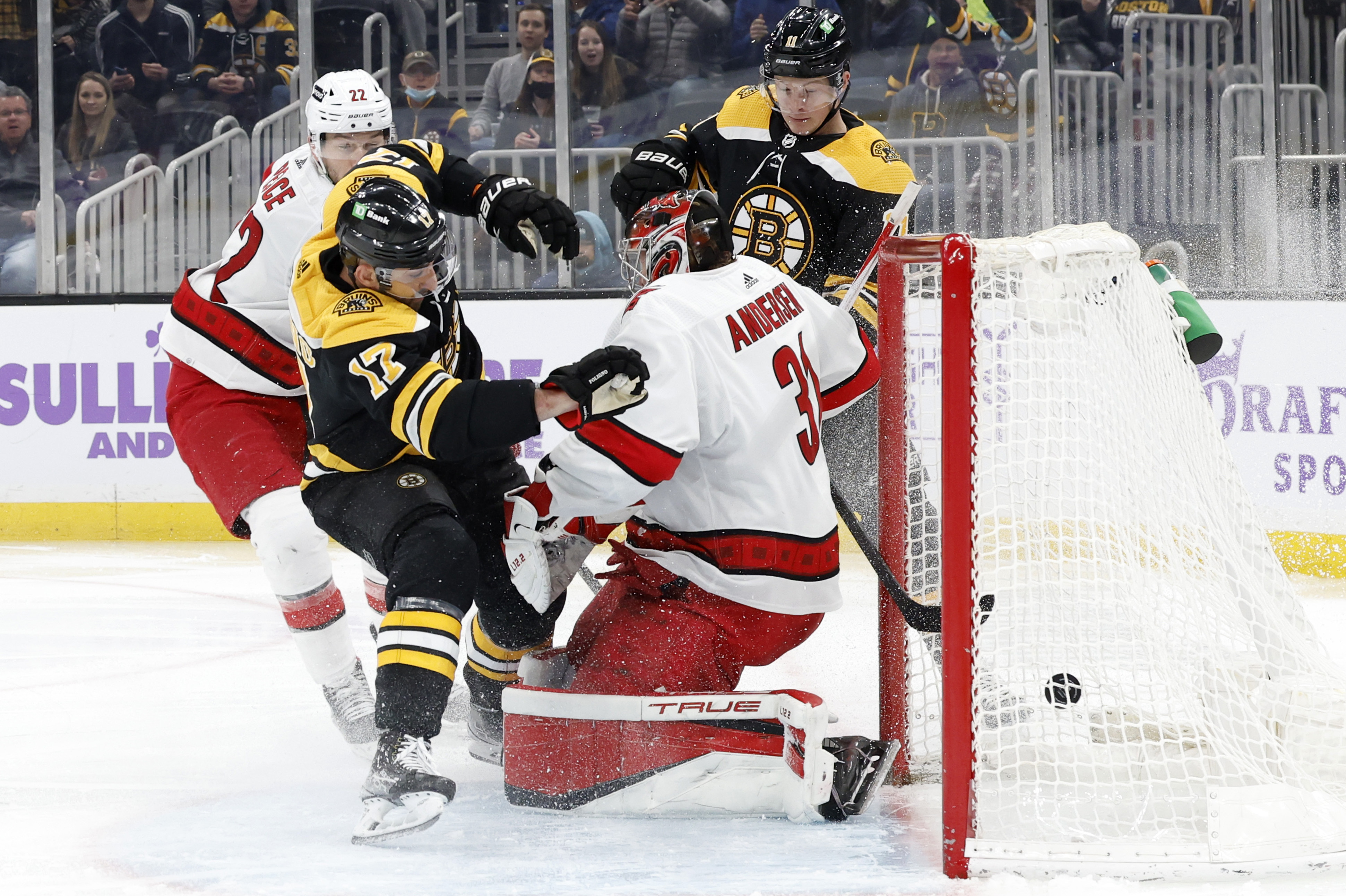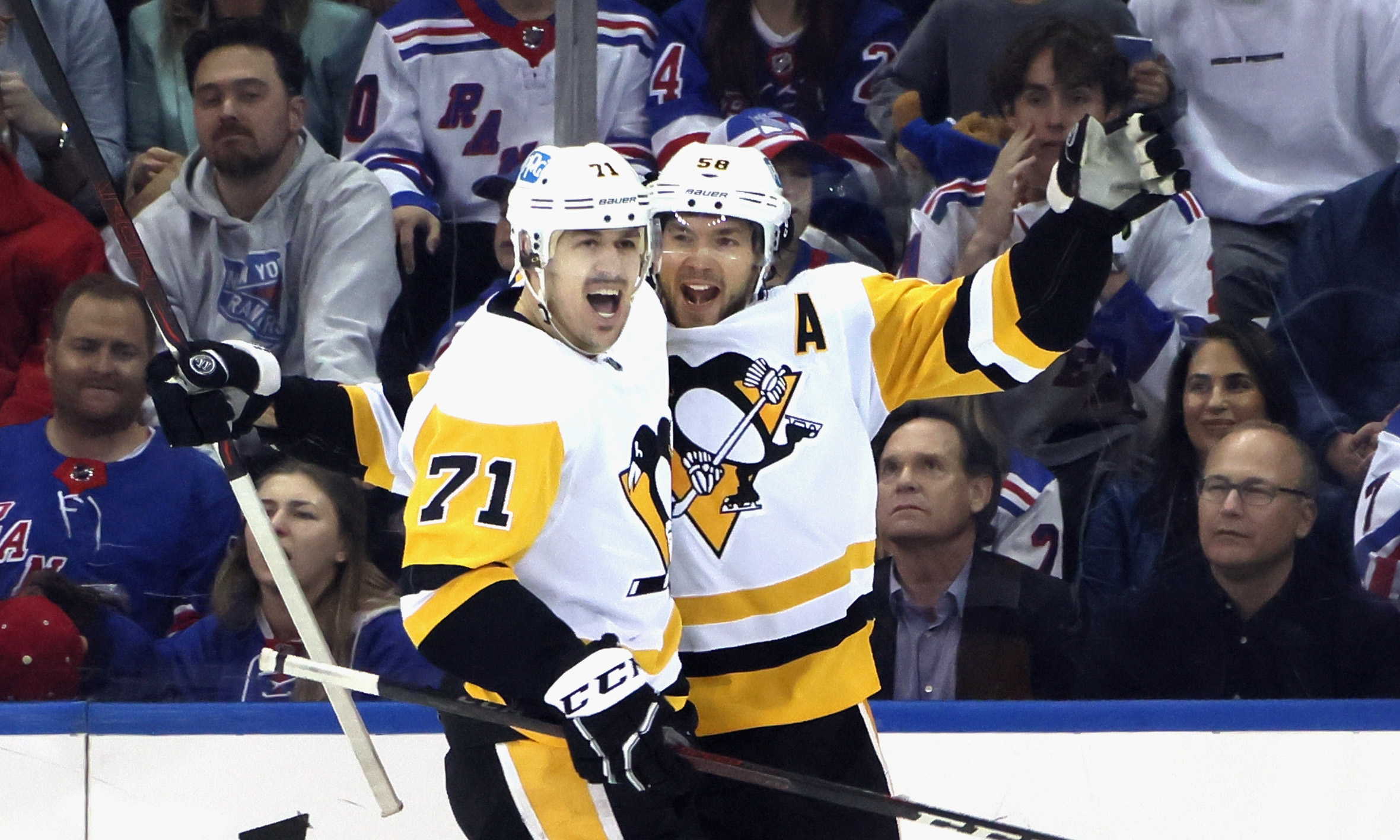N/A
Pittsburgh Penguins
Evgeni Malkin, Penguins Agree to 4-Year Contract with $6.1M AAV

The Penguins and veteran forward Evgeni Malkin have agreed to a four-year, $24.4 million deal that will keep him in Pittsburgh through the 2025-26 season, the team announced Tuesday.
"Evgeni is a generational talent who will be remembered as one of the greatest players in NHL history," said general manager Ron Hextall. "His hockey resume and individual accomplishments speak volumes about him as a player, and we are thrilled to watch him continue his remarkable legacy in Pittsburgh."
The deal comes as no surprise as Malkin offered to take a pay cut of $20 million over three years to remain in Pittsburgh, according to Mark Madden of TribLive. His eight-year, $76 million deal expired after the 2021-22 campaign, and he was set to enter free agency on Wednesday had he not reached a deal with the Pens.
That said, there was some doubt the veteran would remain in Pittsburgh after his close friends and teammates told The Athletic's Rob Rossi that he was "devastated" by the lack of progress on an extension last week.
"He wants to play only in Pittsburgh," one of Malkin's friends told Rossi at the time. "He doesn't understand how it's at this point with him not being signed. He's said, 'They don't think I'm a good player—why?'"
ESPN's Greg Wyshynski also reported that Malkin was set to test free agency after he and the Penguins remained at an impasse in contract negotiations.
The 35-year-old has spent his entire 16-year career with the Penguins, which selected him second overall in the 2004 NHL draft. He has racked up 444 goals and 702 assists for 1,146 points in 981 regular-season games.
Malkin is a three-time All-Star, two-time Art Ross winner, the 2011-12 Hart Trophy winner and 2011-12 Pearson Award winner. He has also been a significant playoff performer for the Pens, tallying 67 goals and 113 assists for 180 points in 177 games.
While Malkin missed time because of injury during the 2021-22 campaign, the Russian still tallied 20 goals and 22 assists for 42 points in 41 games. It was an improvement from the season prior in which he tallied just eight goals and 20 assists in 33 games.
Malkin is still a serviceable forward, and it's no surprise Pittsburgh re-signed him for another four seasons. He has helped the Penguins win three Stanley Cups and been instrumental to their success over the years.
Why It's So Hard for the NHL to Establish Clarity Around Goalie Interference

Rule 69.1 in the official NHL rulebook, "Interference on the Goalkeeper," is one of the most difficult rules to understand and one of the most difficult to determine as an official.
It's 381 words, and that doesn't even include rules 69.2-69.8, which are supposed to provide clarity and context for every situation involving goalie's interference.
No wonder it seems like no one knows what the rule actually entails.
Each year, the Stanley Cup Playoffs cast a shadow on the officials who are tasked with determining what is and is not goalie interference. And it's not just the officials on the ice—fans might love to yell, "Ref, you suck!" but often times, it's the league officials in the situation room in Toronto making the final calls when a challenge is initiated for goalie interference.
Perhaps "official in the situation room in Toronto, you suck!" is too wordy of a chant. Fair enough.
We know that the NHL has been in the midst of an officiating crisis for a few years now, but this one set of standards, in particular, can have more of a direct effect on the outcome of games than maybe something like a missed crosscheck or an errant hook.
The New York Rangers might have won the first game of their opening-round series against the Pittsburgh Penguins in regulation had a goal not been disallowed. Instead, they played a triple-overtime thriller, and backup goalie Louis Domingue stole the game for Pittsburgh.
Carolina Hurricanes coach Rod Brind'Amour would have "bet [his] life" on Jake DeBrusk's goal in Game 4 of the series against the Boston Bruins being overturned, but the NHL said the incidental contact was allowable.
In Game 1 of the Lightning-Panthers series, Anthony Cirelli clipped Florida Panthers netminder Sergei Bobrovsky in the head, but the goal was upheld after review.
Confused? So are we.
Let's take a deeper look at the rule and the process in which goalie interference is determined to see if we can figure out why it's so difficult to properly assess.
What Is Goaltender Interference?
The rule was introduced for the 1991-92 season with a pretty simple philosophy: A penalty is issued when an attacking skater makes contact with the goaltender, impeding, limiting or altogether eliminating his ability to protect the net and stop the puck.
The rule has evolved as technology has evolved, and in 2015-16, coaches were allowed to challenge for goaltender interference. In 2018, the NHL announced that the situation room would have the final say in an attempt to have more consistent rulings.
Here is how the most crucial part of the rule reads this season:
Goals should be disallowed only if: (1) an attacking player, either by his positioning or by contact, impairs the goalkeeper’s ability to move freely within his crease or defend his goal; or (2) an attacking player initiates intentional or deliberate contact with a goalkeeper, inside or outside of his goal crease. Incidental contact with a goalkeeper will be permitted, and resulting goals allowed, when such contact is initiated outside of the goal crease, provided the attacking player has made a reasonable effort to avoid such contact.
If you're having trouble following, it's a way to keep things fair for the goalies, who have more limited movement in their pads and are restricted to certain areas where they can and cannot play the puck. The onus is on the skater to prevent contact that would keep a goalie from being unable to protect the net.
Meanwhile, the challenge mechanism is in place to allow coaches to get a final ruling on the play by league using all available video feeds.
How Is Goalie Interference Determined?
Let's use the aforementioned disallowed goal from Game 1 of that Rangers-Penguins series as an example. The Penguins turned the puck over in the neutral zone, and Rangers forward Kaapo Kakko took it down to the offensive zone, coming down the wing and curling in front of the crease with speed.
With Penguins defenseman Brian Dumoulin on the backcheck, there was a collision in front of the net that knocked goalie Casey DeSmith out of it completely. The play was kept alive, and Kakko flicked the puck to Filip Chytil, who shot the puck into an open net.
Pittsburgh coach Mike Sullivan challenged for goalie interference and won, stating after the game that the Penguins had been a perfect 8-for-8 in those challenge calls on the season.
New York fans were livid, saying the officials were biased toward the Penguins. After all, Dumoulin clearly leaned into Kakko right before the collision.
But Sullivan's video team saw that Kakko failed to make an effort to avoid crashing into DeSmith, so the contact by Dumoulin was immaterial.
The success rate of the Pittsburgh video personnel shows that they are adept at quickly determining whether or not their goalies were interfered with.
The decision-making process, which has to work at lightning speed, often starts with the video replay teams. Video coordinators have less than a minute to issue a recommendation to the bench, and there has to be "indisputable evidence" to overturn a call.
The replay teams have a set of criteria they have to be able to quickly identify:
- Was the contact inside or outside of the crease?
- Was it initiated by the goalie's own defenseman, or was it by an attacking skater?
- Was that contact avoidable, and did the skater make an effort to avoid the contact?
- Did the goalie have enough time to get back into position before the goal was scored?
- Did the contact have a material impact on the goalie's ability to make a save?
There are other variables that go into these decisions as well, like where the puck was, the score in the game, how much time is left on the clock and whether or not the goalie fought for his ice or just remained on the ground when he was able to regain his position (i.e., did he flop).
There are times when even goaltenders don't immediately realize they have been interfered with, which is why teams rely on replay personnel. They issue a recommendation to the coach on whether or not to challenge.
Then, the officials put on the headset and dial up the Situation Room, where the feeds are analyzed.
It's important to note that the officials in Toronto have more available angles than the teams. They have more overhead angles and net camera feeds, which is often why it takes them longer than the 15-30 seconds it takes the video coordinators.
Why Is It So Hard to Determine?
There is a lot of gray area, and it leaves a lot of room for interpretation.
At the end of the day, it's a judgment call, and those are never 100 percent correct. Getting calls wrong can be embarrassing for the officials on the ice.
The league will issue explanations for the rulings but aren't allowed to be questioned. Many have suggested allowing a pool reporter from the media to ask for clarification, which is a common practice in the three other major North American professional sports leagues.
A direct line from the video booths to Toronto might help clarify things as well since the video coordinators from each team can relay the angles and time codes they are looking at.
But while the inconsistent outcomes can be maddening, the priority is getting the call right, especially during the postseason. This can be extremely difficult given just how quickly goals are scored. The speed should not be understated. The game is fast out there.
What you see on Twitter might not be what they're seeing in Toronto. So the next time you're ready to get fired up thinking it was a blown call, ask yourself, do you really know what goalie interference is? Do any of us really know what it is?
Penguins Want to Keep Evgeni Malkin, Kris Letang for Rest of Their Careers, GM Says

The futures of free agents Evgeni Malkin and Kris Letang in Pittsburgh are up in the air. However, it appears Penguins general manager Ron Hextall will do everything possible to keep the duo in Pittsburgh for years to come.
Speaking with reporters Monday, Hextall said he has had contract negotiations with both players and wants to keep them in the Black and Gold for the rest of their careers.
"We have had discussions very recently, and will continue those. We would like to sign both players," Hextall said, "We'd like to keep Geno as a Pittsburgh Penguin for the rest of his career; Tanger is the same."
Hextall was also asked where the team is with both players on the lengths of their potential new contracts. He responded:
"What I can tell you is they're both great athletes who have been here a long time and are performing at a high level right now," Hextall told reporters. "We'd certainly like to have them in the mix in September."
Hextall's comments come after Malkin told reporters last week that he hopes to remain in Pittsburgh to finish his career with the Penguins.
"I love this city and I love these fans so much," Malkin said. "If this team wants new blood and young guys and they say to me to move on, we will see. ... I believe in my agent and I trust him. I want to stay here. I want to play in the NHL. ... I hope I stay here. I hope I retire here."
Malkin has spent his entire career with the Penguins, who selected him second overall in the 2004 draft. He has been one of Pittsburgh's best players since breaking onto the scene in 2006, tallying 444 goals and 702 assists for 1,146 points in 981 games.
The 35-year-old has also helped the Penguins win three Stanley Cups and has won numerous awards over his career, including the Ted Lindsay Award, Art Ross Trophy and Hart Memorial Trophy.
Letang has also only played for the Penguins, who selected him in the third round of the 2005 draft. Since making his debut in 2006, Letang has tallied 144 goals and 506 assists in 941 games.
The 35-year-old was also a member of Pittsburgh's Stanley Cup-winning teams and is a two-time All-Star.
It's unclear what kind of deals both players are looking for. However, The Athletic's Rob Rossi reported on 93.7 The Fan that the Penguins offered both players three-year, $15 million deals. The offers "did not sit well" with Sidney Crosby, according to Rossi.
The Pens were set to have nearly $28.8 million in cap space this summer, according to ESPN's Kristen Shilton and Greg Wyshynski, but they already re-signed Bryan Rust to a six-year, $5.125 million this offseason and should have around $24 million available to spend.
In addition to re-signing Malkin and Letang, they also need to re-sign players like Rickard Rakell, Kasperi Kapanen and Danton Heinen.
